Humanity has struggled to learn from past experiences. Over the last 20 years, disease outbreaks, including both Ebola crises, the 2009 H1N1 pandemic, and other coronavirus outbreaks, like SARS and MERS, have failed to prepare the world for the COVID-19 pandemic. The virus continues to tighten its grip around the world with confirmed case counts soaring over 1.5 million this week and the number of worldwide deaths surpassing 100,000. Leaders have turned to drastic measures to reduce the spread; however, until countermeasures are developed, tested, and validated, it is hard to imagine when the world will return to ‘normal.’ As the war against COVID-19 persists, it is imperative that the world recognizes successful strategies. Effective measures for containing COVID-19 spread include ensuring sufficient testing kits for the population, mitigation through social distancing, and, most importantly, the ability to work quickly and collectively. So far, there have been places (e.g., South Korea and Washington State) of effective suppression and mitigation that provide model responses for ‘flattening the curve.’
Despite a sudden spike in infections, South Korea quickly put together a well-established strategy to mitigate the spread. Many countries have attempted to use a whole-of-government approach, but South Korea implemented a plan that integrates federal, regional, and local governments responses to COVID-19. Involving the entirety of the government meant that hospitals were not fighting for testing kits or bed space, instead they operated together to compensate for harder hit areas. Another imperative step was ensuring adequate testing kits for all patients suspected of having COVID-19. South Korea established from the beginning that maintaining enough testing kits was needed to not only identify positive case numbers, but also to monitor the actual transmissibility of a fast-spreading virus. In a virtual forum with the World Economic Forum, South Korea’s Foreign Minister Kang Kyung-wha elucidated that “[South Korea] has tested over 350,000 cases so far – some patients are tested many times before they are released, so we can say they are fully cured. Altogether, we are talking about one out of 145 or one out of 150 people having been tested so far.” South Korea has proven successful in achieving this feat, evident as a majority of South Korea’s workforce has returned to their occupations.
Another example of success has been Washington State’s response. In early March, the state had one of the earliest clusters of confirmed cases in the U.S., but the disease trajectory subsided by employing disease suppression and mitigation methods, like mandatory social distancing. The state, guided by Governor Jay Inslee and Mayor Jenny Durkan of Seattle, declared a state of emergency on February 29th. On March 23rd, when Governor Inslee announced a statewide order requiring citizens of the state to stay home, except for essential activity. These timely efforts bought Washington communities precious time, in addition to “flattening the curve” of infections, even though the state did not necessarily have the high case numbers to justify such measures.
In a recent webinar forum with the Nuclear Threat Initiative, Mayor Durkan mentioned that the “pace and scope of this [outbreak] is something that no one can prepare you for.” This was evident by the rapid progression of COVID-19 in the Seattle area. The first confirmed case in Seattle was announced on February 28th, the first death was announced on February 29th, and by March 4th Seattle was closing most of its economy. Per Mayor Durkan, one of the vital factors in combating COVID-19 was the city’s ability to pull resources from its local community. Most of the large employers within Seattle complied with the stay at home order by pushing teleworking to all employees. Mayor Durkan’s most pressing piece of advice for other cities and states was to “act quickly,” citing the need to reduce contact among citizens as soon as possible. Her statement resonates an essential takeaway that the longer the virus is circulating in a community, the more likely transmission is to happen.
During the April 4th White House press conference, Dr. Anthony Fauci stated that countries that have “implemented very strict kinds of programs of mitigation, clearly [show] it works. In our own country, we have seen indication of that in Washington.” Together the measures mentioned above have made a significant difference in combatting COVID-19. The hope is that other countries and states take notice and act quickly. As the case numbers rise, economies and global travel grind to a halt, and misinformation spreads rapidly, it is critical that humanity look to successful models, like South Korea and Washington State, until the production of viable countermeasures. Defeating COVID-19 will be difficult, but a separated and disjointed global response will only exacerbate the pain and suffering of the world.
Michael Krug is a second-year graduate student in the Biodefense Master’s Program at the Schar School of Policy and Government. He has a Bachelor of Science degree in Biochemistry from Virginia Tech and worked for several years in the pharmaceutical industry, accruing experience in the fields of molecular biology, drug development, and biotechnologies. His research interests incorporate national security and emerging dual-use technologies, specifically, synthetic biology and genome-editing techniques.
Photo can be found here.




